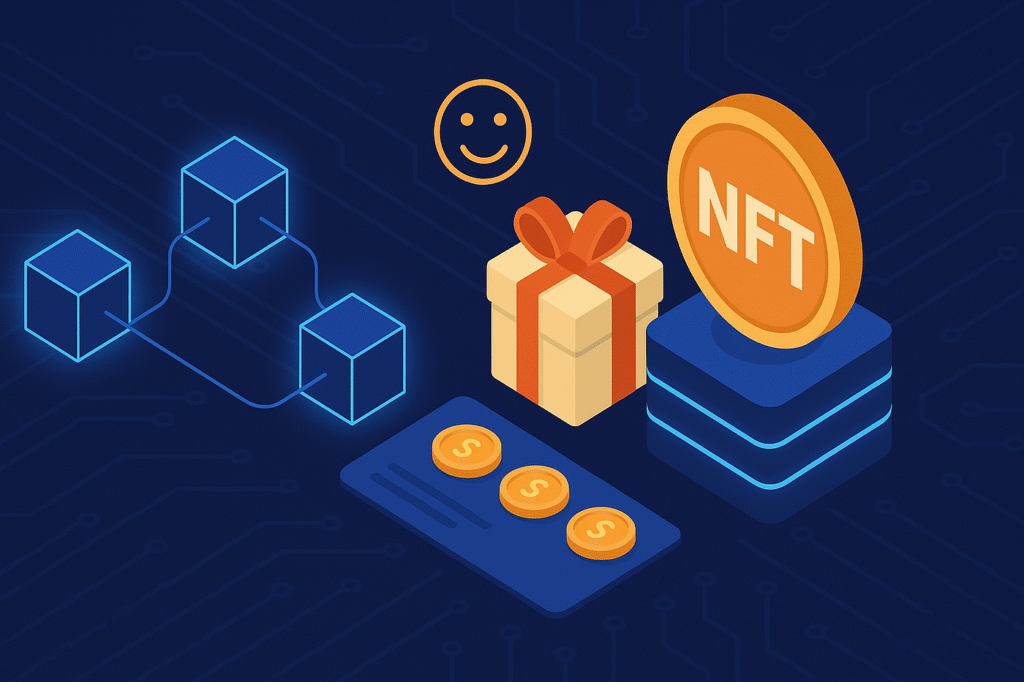What Are Token Incentives, Anyway?
If you’ve ever earned a crypto token for using a platform, playing a game, or staking coins—you’ve experienced a token incentive.
These are basically digital rewards for doing something the platform wants you to do:
- Use the app
- Invite friends
- Help secure the network
- Vote on decisions
It’s like giving people a little “thank you” that also has value.
But behind that reward is something deeper: behavioral science.
So Why Do We Fall for These Rewards?
Because we’re human. And humans love:
- Winning things
- Avoiding loss
- Feeling important
- Being part of something
Let’s break down the key psychological reasons token incentives work so well.
1. We Love Getting Rewards (Especially If They Feel Earned)

Our brains light up when we get something valuable. Even small rewards trigger dopamine—the “feel-good” chemical.
In blockchain:
Platforms like Axie Infinity or StepN pay users for completing in-game or fitness tasks. You do something, get a token, and suddenly it feels like real progress.
It’s like getting points in a game—but with actual value attached.
2. We Really Hate Losing
Here’s a weird quirk: losing something hurts more than gaining something feels good.
So when platforms say, “Stake your tokens and earn rewards—but mess up and we’ll slash them,” it makes people stay alert and honest.
Example:
Ethereum’s validator system punishes users who go offline or behave badly. People stay in line because they don’t want to lose what they’ve earned.
3. Tokens Can Feel Like Status Symbols
People love standing out. Having a rare token, NFT, or governance badge shows you’re someone in the community.
Think of it like this:
Holding a popular token early (like owning Bitcoin in 2011) feels like being part of an elite club. Some tokens even come with voting power or VIP perks.
Like owning a Bored Ape NFT—it’s not just art, it’s access to exclusive events, parties, and recognition.
4. Random Rewards Keep Us Hooked
You ever check your email just in case something exciting’s waiting? That’s variable reward psychology.
When platforms offer surprise airdrops, gamified achievements, or bonus tokens—users stay engaged longer.
Example:
The Arbitrum $ARB airdrop caught everyone off guard. Some users got thousands of dollars just for being early adopters. That thrill? Addictive.
5. The More We Invest, The More We Stick Around
This is called the “sunk cost fallacy.” When we spend time, effort, or money on something, we don’t want to walk away.
In Web3:
People who buy into a project or stake tokens are more likely to stay loyal, vote in governance, and promote the platform. They’ve already committed.
Example:
DAO members usually hold tokens and participate actively. Not because they have to—but because they feel part of the mission.
Quick Recap: What Drives Us?
Let’s sum up the main psychological drivers behind token incentives:
| Human Behavior | Token System Tactic |
| We love rewards | Earn tokens for good behavior |
| We hate losing | Penalties for bad actions |
| We want status | Exclusive NFTs & governance |
| We enjoy surprises | Airdrops & random perks |
| We value commitment | Holding = deeper engagement |
Real Examples in the Wild

Helium (HNT)
You run a hotspot. Others use your network. You earn tokens. Simple.
This combines:
– Reward motivation
– Financial commitment
– Community pride
Steemit
\Write a blog post, get paid in crypto based on likes.
It feels fair—and fuels consistent content creation.
How Projects Make These Systems Work
Designing a token system isn’t just about handing out coins. It has to:
- Feel fair
- Create value
- Prevent abuse
- Encourage long-term loyalty
Projects balance game theory + human behavior. They study what makes people act—and build around that.
Web2 vs Web3: Not So Different
Instagram uses likes. TikTok uses followers. Games use points.
Web3 just adds money and ownership into the mix.
It still works because we’re the same humans—with the same drives.
Final Thoughts: Why It Works So Well
The best blockchain platforms understand one thing:
Tokens aren’t just money—they’re motivation.
They reward action. They inspire loyalty. They build community. And most importantly, they work because they play to our psychology.
Frequently Asked Questions
About the Psychology Behind Token Incentives in Blockchain
1. What are token incentives in blockchain?
Token incentives are digital rewards—usually in the form of cryptocurrency or tokens—that users earn for doing certain activities on a blockchain platform. These can include staking, playing games, voting in a DAO, or providing liquidity.
2. Why do token incentives work so well?
They tap into basic human psychology. People love getting rewards, hate losing what they’ve earned, and want to feel like part of a community. Token incentives are powerful because they mix financial value with emotional triggers like recognition, curiosity, and commitment.
3. Are these incentives only about money?
No, not always. While tokens can have financial value, they also carry social and emotional value—like gaining status, unlocking perks, or feeling important in a community. Think of NFTs or governance tokens—they’re about identity too.
4. What’s the difference between fixed and random rewards?
- Fixed rewards are predictable—you know what you’ll get.
- Random rewards (like airdrops) are unexpected and exciting.
Humans tend to stick around longer when they think something special might be coming. That’s why surprise drops work so well in Web3.
5. How does loss aversion play into blockchain systems?
Loss aversion means people hate losing more than they love gaining. Blockchain platforms use this by slashing tokens or punishing bad behavior—like offline validators in Ethereum. It keeps people honest and engaged.
6. Do token incentives really keep users loyal?

Yes. When users spend time, effort, or money on a platform (like staking tokens), they feel invested. This makes them more likely to stick around. It’s called commitment bias—we value things more when we’ve put something into them.
7. How are token incentives different from Web2 loyalty systems?
In Web2, you might earn points or badges that only work within one app. In Web3, the rewards (tokens or NFTs) are ownable, tradeable, and sometimes usable across platforms. It adds real value and freedom.
8. Can token incentives be misused or gamed?
Absolutely. Poorly designed incentives can lead to bots, spam, or people gaming the system. That’s why smart blockchain platforms focus on balanced reward structures that are transparent and hard to exploit.
9. What’s an example of a successful token incentive model?
Projects like Helium, Uniswap, and Steemit have done it well. They reward users for contributing—whether by running infrastructure, providing liquidity, or creating content—while also building strong communities around their tokens.
10. What should I look for in a healthy token incentive system?
Look for these signs:
- Clear goals (What’s the reward meant to do?)
- Real value (Can the token actually be used or traded?)
- Transparency (Are the rules clear?)
- Anti-abuse systems (Can people cheat?)
- Long-term thinking (Does it build loyalty, not just hype?)
